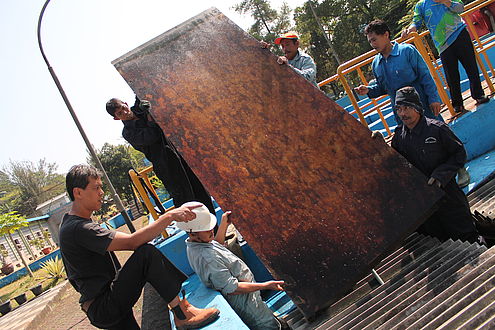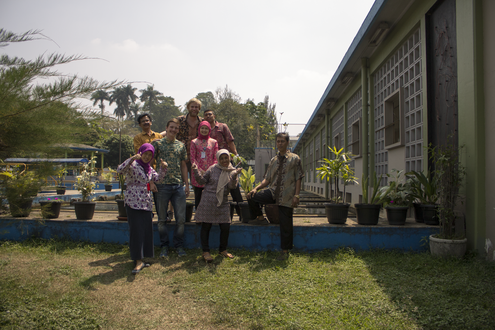Drinking water quality of PDAM Tirtawening kota Bandung
Cas Hendriks & Tim van Koelen
Clean drinking water is one of the basic necessities of life. To be able to guarantee safe and reliable drinking water, water treatment plants need to operate efficiently and constantly. Since the population in Bandung is ever increasing, there is a large demand for clean drinking water. The water treatment plant of Bandung has to keep up with this demand and therefore the plant has been upgraded about 40 years ago with a newly build part. But unfortunately, this part of the water treatment plant is not functioning as good as it could.
Cas Hendriks and Tim van Koelen have been to Bandung on the island Java during the summer of 2015 for their bachelor thesis, to investigate why the drinking water quality of the water treatment plant in Bandung is of such a low quality. Also research has been done on the increase of the production quantity, but this appeared to automatically follow from an increase of water quality in early stages of the water treatment.
Every day we took daily measurements of the turbidity and pH to be able to monitor the whole system. These points have been taken at the in- and outflows of the labyrinth, lamella separator and rapid sand filters. Also more and specific measurements were done when a part was cleaned or had to be monitored more closely.
During the project, we looked into the cleaning of the treatment steps, the flow rates, the velocity gradients and the dosing of coagulant. What we found out was that the cleaning and the dosing of coagulant were the steps that could best be improved.
The basic cleaning with a fire hose and brushes proved not to be enough to clean a part of the treatment plant, a more thorough cleaning is needed. Unfortunately there was no high pressure washer available, but it is recommended to make use of a high pressure washer to clean the systems until they are very clean.
With the dosing of aluminium we first tried to find the optimum dosage for the water, and compare it with the amount that is being dosed in the system. The optimum found with the help of a jar test appeared to be more than was being dosed at the water treatment plant. This was also confirmed by taking a sample from the labyrinth with the dose in it and adding some additional coagulant to that sample. Exactly the same optimum was found, and during the last days of the project we were allowed to prove in the real system that the dosage was better. The turbidity values decreased drastically, which was the best possible outcome of the real scale test!
The project is still continuing, and in November 2015 two new students will continue where we left. The changes that should be made to the water treatment plant of Bandung will be implemented to improve the water quality and production quantity. Therefore this project has created added value to the city of Bandung and to the knowledge of the water treatment plant.

